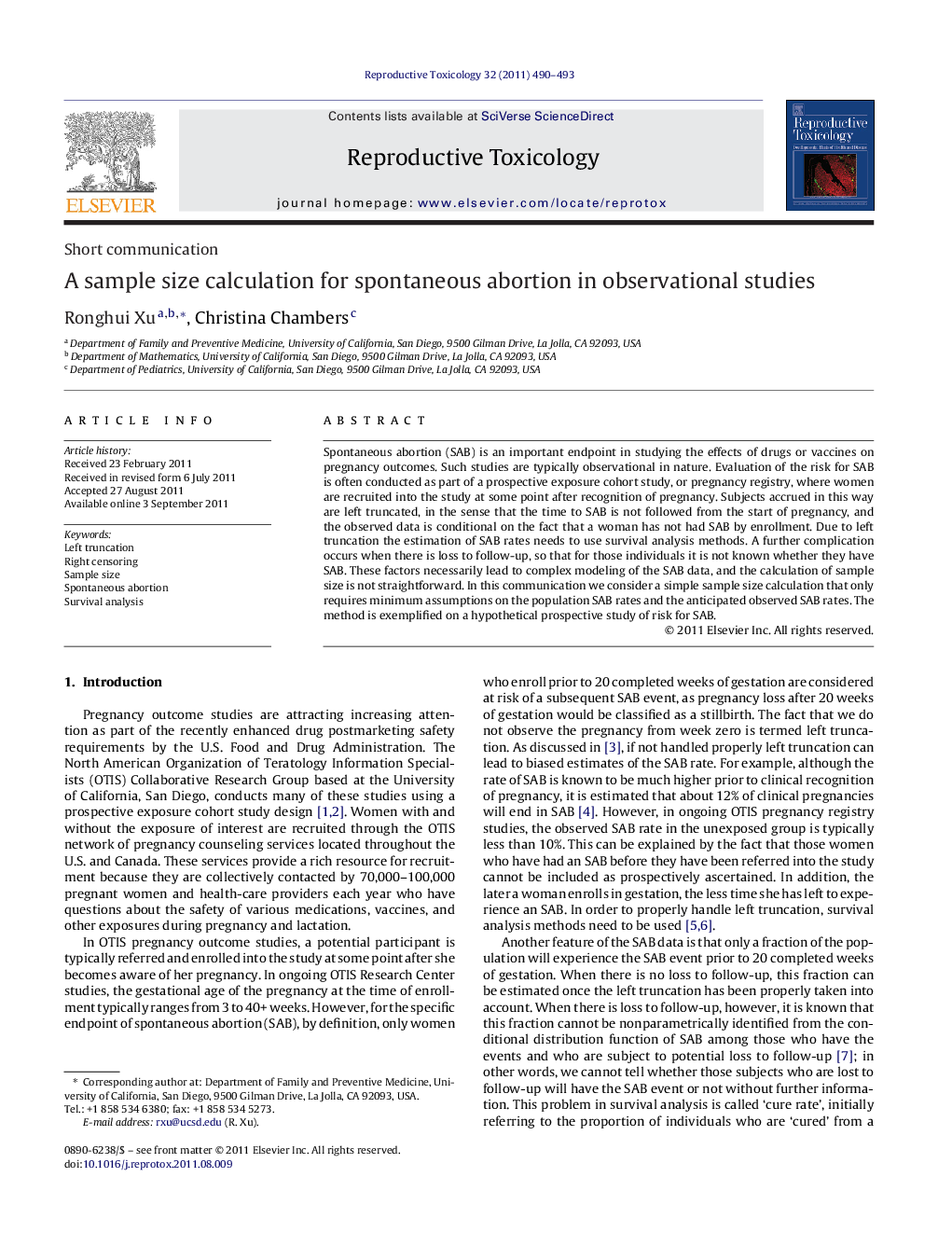| Article ID | Journal | Published Year | Pages | File Type |
|---|---|---|---|---|
| 2594012 | Reproductive Toxicology | 2011 | 4 Pages |
Spontaneous abortion (SAB) is an important endpoint in studying the effects of drugs or vaccines on pregnancy outcomes. Such studies are typically observational in nature. Evaluation of the risk for SAB is often conducted as part of a prospective exposure cohort study, or pregnancy registry, where women are recruited into the study at some point after recognition of pregnancy. Subjects accrued in this way are left truncated, in the sense that the time to SAB is not followed from the start of pregnancy, and the observed data is conditional on the fact that a woman has not had SAB by enrollment. Due to left truncation the estimation of SAB rates needs to use survival analysis methods. A further complication occurs when there is loss to follow-up, so that for those individuals it is not known whether they have SAB. These factors necessarily lead to complex modeling of the SAB data, and the calculation of sample size is not straightforward. In this communication we consider a simple sample size calculation that only requires minimum assumptions on the population SAB rates and the anticipated observed SAB rates. The method is exemplified on a hypothetical prospective study of risk for SAB.
